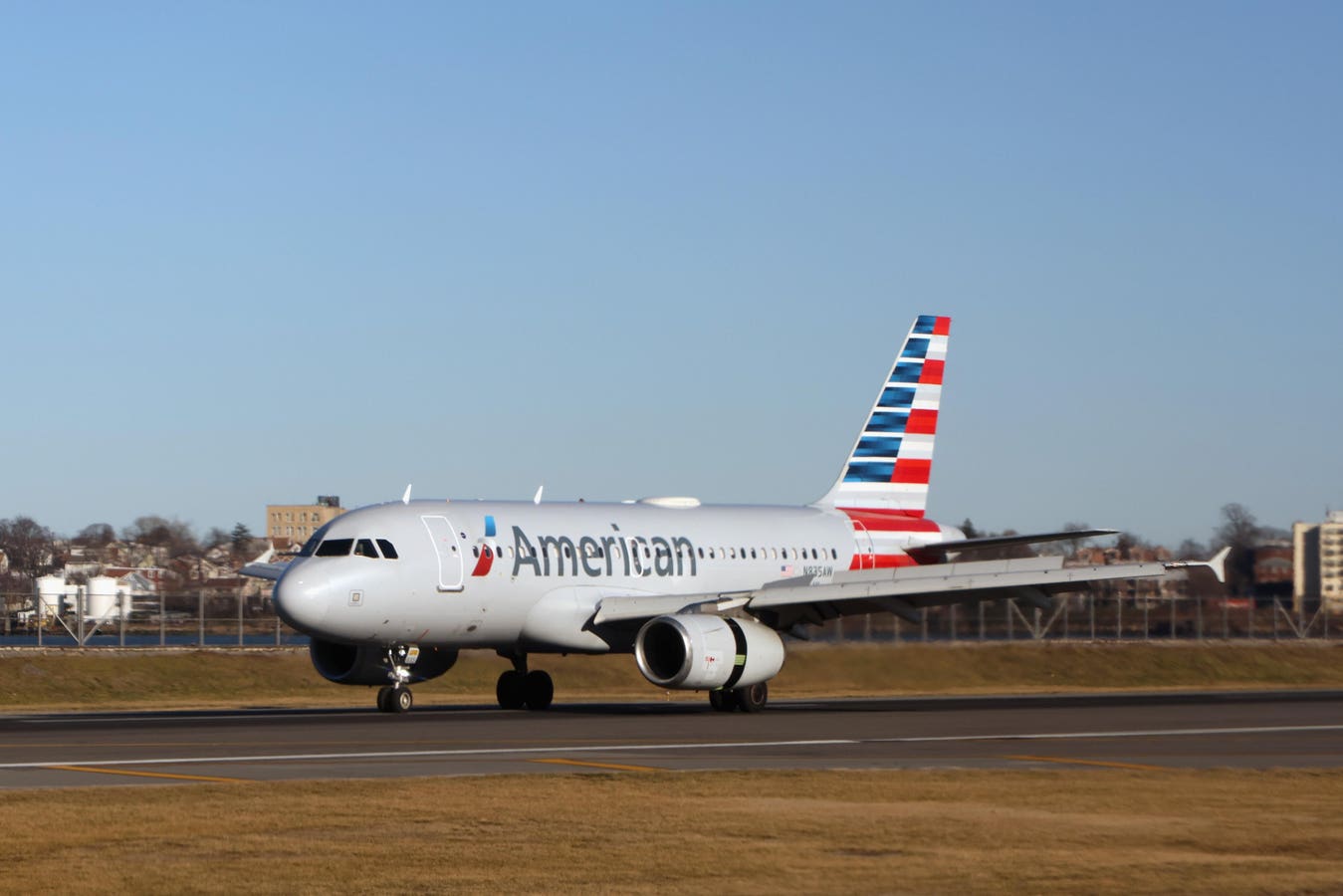Topline
American is the second U.S. legacy airline to withdraw its financial guidance for 2025, dropping its prediction for how the company will perform this year amid economic uncertainty is bringing turbulence to the industry.
American Airlines joined Delta in withdrawing its full-year guidance, citing uncertainty in the … More economy. (Photo by Bruce Bennett)
Key Facts
“We’re taking a very cautious, even a negative, approach to growth as we take a look out to the rest of the year,” American Airlines CEO Robert Isom told investors on the company’s first-quarter earnings call Thursday, explaining how economic uncertainty impacted the carrier’s ability to forecast for the full year.
Even so, American said it expected to eke out a profit in 2025, while reporting a narrower-than-expected loss of 59 cents per share in the first three months of the year and quarterly revenue of $12.55 billion that was just above estimates.
American Airlines stock–which is down 45% year to date–rose a little more than 1% after the earnings call.
The Dow Jones Airlines Index has tumbled 30% since the beginning of the year.
Shares of low-cost carrier Frontier Airlines are down 56% year to date.
Key Background
As recently as January, American was expecting 2025 to be a good year, forecasting 4.5% to 7.5% in revenue growth compared to 2024. But a shaky economy, exacerbated by President Donald Trump’s tariffs, has introduced “significant weakness in our main cabin demand, significant weakness among our most discretionary travelers,” American Airlines chief financial officer Devon May told investors. “Right now there’s uncertainty in the marketplace,” echoed Isom. “What does that mean? It means that we don’t hire as much. It means we don’t bring out as many planes. Potentially, it means a reduction in overall economic activity. It’s the same thing for the customer that’s planning a vacation. Nobody relishes uncertainty.”
Crucial Quote
“Certainly this is not something we would intend to absorb, and I’ll tell you, it’s not something that I would expect our customers to welcome,” Isom said in response to a question of the impact of tariffs levied on aircraft. American Airlines’ fleet is split nearly evenly between aircraft from Boeing and French manufacturer Airbus.
Big Number
$1.3 trillion. That’s how much the U.S. travel industry generates in direct spending while supporting one in every 11 U.S. jobs. “Anything that spurs demand for travel, both domestically and abroad, is something we will support,” Isom said. “This starts with making America a welcoming destination for international travelers, especially in advance of major events like FIFA World Cup ‘26, of which we’re a sponsor, and later the 2028 Olympic Games in Los Angeles.”
How Will Lower Demand Impact Airfares This Summer?
It could mean lower fares on many domestic routes, as airlines adjust supply to align with demand. “I’ll tell you right now, we have a negative bias to all capacity,” Isom told investors. Acknowledging “pretty significant weakness in the part of our business that’s very sensitive to economic conditions,” American’s chief strategy officer Steve Johnson added, “In those circumstances, you do see prices that are lower….I think that’s going to continue to be the case until we understand which direction the economy is going and we remove some of this uncertainty and some of that demand comes off the sidelines.”
What To Watch For
Whether the weak U.S. dollar will keep Americans from traveling overseas this year. American and other airlines have repeatedly cited the strength of the long-haul international market. But American travelers’ appetite for foreign destinations could soon wane, given the greenback has tumbled more than 8% year to date, according to the DXY, an index that measures the dollar against a basket of foreign currencies. That means Americans are paying noticeably more when visiting abroad this year. The dollar is down 9% versus the euro, down 6% against the pound sterling and down 10% versus the Japanese yen since the beginning of the year. Even in North America, the U.S. dollar is down 4% and 6% against the Canadian dollar and Mexican peso, respectively.
Tangent
Airlines are bracing for disruption to domestic flying when the Transportation Security Administration (TSA) begins enforcing REAL IDs on May 7. Currently, up to 19% of passengers arrive at airports without REAL ID-compliant identification, according to TSA data. That means potentially between 400,000 and 513,000 passengers could be subject to additional screening every day in the first weeks of enforcement.
Further Reading
Trump’s Tariffs Sent U.S. Airline Bookings Into A Tailspin, New Data Show (Forbes)











